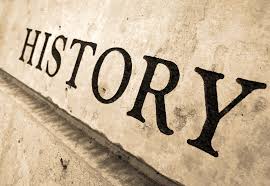INDIAN HISTORY Series 2
Abdul Ghaffar Khan: He was popularly known as ‘Frontier Gandhi’.
Refer Red Shirts and also under Civil Disobedience Movement.
Abdur Rahim Khan-i-Khanan: lived during the reign of Akbar. He
translated Babar’s Memoirs from Turki to Persian.
Abdur Razzaq: was a Persian traveller who visited Vijayanagar during
the reign of Deva Raya II (1425-46).
Abdussamad: He was honoured with the award of “zari-qalam” by
Akbar.
Abhinav Bharat Society: It was a secret terrorist organisation formed
by V.D. Savarkar.
Abhiras: were an immigrant non-Aryan tribe of ancient India. They
were Central Asian nomads of Scythian stock.
Acharya Narendra Dev: was a prominent leader of the Congress So-
cialist Party.
Agha Khan: He ia known to have led the deputation of Muslim leaders
Agha Khan: He ia known to have led the deputation of Muslim leaders
to the Viceroy, Lord Minto II, in 1906, seeking separate electorates for
Muslims in any representative system which might be introduced.
Ahmad Shah Abdali: The invasion of Ahmed Shah Abdali in the third
battle of Panipat in 1761, gave a death blow to the political fortunes
of Marhattas.
Ahmadnagar: is associated with Nizam Shahi.
Ahmedabad city: on the left bank of the Sabarmati river, was built by
Ahmad Shah.
Aihole : in Karnataka contains chief sites of Chalukyan architecture.
Aihole inscription gives information regarding Pulakesin-II.
Ajanta Paintings: depict scenes from the Jataka stories which form
the main theme of these paintings.
Ajivika : Ajivika sect was founded by Gosala Maskriputra who flour-
ished during the Mauryan period and had lived with Mahavira for six
years and subsequently left him and became the leader of the Ajivika
sect.
Akbar: He was not influenced by earlier rulers so far as religious tol-
erance was concerned.
Akbarnama: It was written by Abul Fazl, the celebrated Mughal court
poet and councillor of Akbar.
Akot: is a town, about 42 km from Akola, from where a stone idol of
Lord Adinath, the first Jain Teerthankar, was found in 1993.
Ala-ud-din Khilji: He introduced price control covering almost the en-
tire market. Grain was rationed and the price fixed.
Khalsah (crown land) increased considerably under Ala-ud-din Khilji.
According to historian V.A. Smith, “Ala-ud-din Khilji introduced eco-
nomic policy to check Mongol invaders”.
‘Iqta’ , a land-grant system, was introduced by him.
He challenged the authority of ‘Khalifa’.
Copper coins were started by him. Jaziya tax was collected from non-
Muslims during his reign.
He sent Malik Kafur to Deccan for conquest.
Alberuni: He was a celebrated Muslim historian who visited India in
company with the armies of Mahmud of Ghazni. He was also a San-
skrit scholar. He wrote ‘Tahqiq-i-Hind’
Alexander: invaded India in 326 B.C.
Alfonso-de-Albuquerque: was the real founder of the Portuguese Em-
pire in India. He was the first governor of Portuguese possessions in
the East. He conquered Goa in 1510 and made it his capital. He died
in 1515.
Aligarh Muslim University: was founded by Sir Syed Ahmed Khan.
Allahabad Pillar inscription: provides us useful information about
Samudragupta.
Amarasimha: was one of the nine gems in the court of the legendary
Vikramaditya. His work Amarkosha occupies a dominant position in
Sanskrit lexicography.
Amir Khusrau: (1255-1325) wrote prose and poetic works in Persian,
Hindi, and Arabic. Surnamed as the “Parrot of India”, he was a con-
temporary of Sultan Balban.
Amri Culture: flourished in Baluchistan.
Amritsar city: was founded by Guru Ram Dass in 1577. The place for
Amritsar was given to Guru Ram Dass by the Mughal Emperor Akbar.
Angkor Vat: a ruined city in Kampuchia (Cambodia) where beautiful
specimens of ancient Indian art and culture are found. Here Indian expertise has been used in archaeological restoration of the monuments.
Anglo-Mysore War, Third: was fought between the English under
Cornwallis and Tipu Sultan in 1790-92. Tipu Sultan had to submit and
was compelled to sign the Treaty of Seringapattam.
Anushilan Samiti: was formed by Sri Aurobindo Ghosh.
Apabhramsa: This t erm was used in medieval Sanskrit texts to de-
note early forms of some of the modern Indian languages.
Apastamba: is named after a native of Andhra, whose rules are ob-
served mainly in Andhra state; his sutras are based on a Black Yajur-
veda of South India.
Arjun Dev, Guru: He was the fifth Guru of the Sikhs. He was put to
death by the Mughal emperor Jehangir. He is associated with Adi
Granth.
Arsha: “rishi-like” marriage current only among priestly families. A
cow or a bull is given as a token bride-price.
Arthasastra: by Kautilya or Chanakya is a compendium of almost all
the ancient works on artha (economics). The text was discovered only
in 1905. It is divided into fifteen books treating of a variety of political
topics.As per Arthasastra, permanent peace is not possible.
Arya Samaj: was founded by Dayanand Saraswati. It opposed idola-
try; encouraged conversion to Hinduism and condemned casteism.
Aryabhatta: (476-520 A.D.) after whom India’s first scientific satellite
has been named, was a great Indian astronomer and mathematician.
He was a contemporary of Chandra Gupta-II.
He was the first Indian scholar who treated Mathematics as a distinct
subject and pointed out the importance of “Zero”. He is also credited
with the invention of Algebra.
Aryans: Aryans originally came from Central Asia. Cattle-rearing was
their main occupation. For them, cow was the measure of value and
an object of veneration.
Aryans and Non-Aryans: We acquire the knowledge of the battle be-
tween the Aryans and the non-Aryans from Vedas
Asanga: was a Buddhist philosopher. He was the originator of Bud-
dhist Yogachara idealism.
Ashoka, the Great: (264-228 B.C.) Indian Emperor, grandson of
Chandragupta. He denounced war, embraced and preached Bud-
dhism after the bloody battle of Kalinga.
The mighty empire of the Mauryans began to decline after the death
of Ashoka.
Ashokan inscriptions: were first deciphered in 1837 by James Prin-
sep, a civil servant in the employ of the East India Company in Ben-
gal. These Ashokan Inscriptions were engraved in Brahmi script in
Prakrit language.
In Rock Edict-I, Ashoka forbids the slaughter and sacrifice of animals.
In Rock Edict-II, the Pandyas, the Keralaputras and the Satyaputras
are mentioned as Ashoka’s neighbouring powers.
In his inscriptions at Maski and Gujarra, Ashoka has been metioned
by name.
In Junagarh inscription, Ashoka and Chandragupta Maurya have
been mentioned together.
Ashta Pradhan: A council of ministers which helped Shivaji in dis-
charge of State Affairs.
Ashtadhyaya:was written by Panini.
Ashtapradhan: was the Council of Ministers during the reign of Shiv-
aji.
Ashvaghosha: was the spiritual adviser of Kanishka (the Kushan em-
peror) who took a leading part in the Fourth Buddhist Council at Sri-
nagar which was presided by Vasumitra.
He was a renowned Mahayana Sanskrit scholar and author of Saripu-
tra-prakarana.
He was the greatest literary figure of Kanishka’s court.
Asiatic Society: Of Calcutta, was founded in 1784 by Sir William
Jones to enquire into history, antiquities, arts, science and literature
of Asia.
Asura: named after the Asuras, is marriage by sale of the bride. The
Asura marriage was condemned by Manu and the law books as im-
moral.
Atharva Veda: deals with charms and spells to ward off evils and dis-
ease.
Atharvaveda: Principles and poractice of medical science can be
traced back to Atharvaveda.
Attlee, Clement : was the Prime Minister of England at the time of
grant of independence to India in 1947.
Aurangzeb : was the third son of Shah Jahan, who ruled as Mughal
Emperor (1658-1707). He levied higher trade duties on Hindu traders
in 1679. He re-imposed Jaziya. He is known for his ruinous Deccan
policy. He made a serious mistake in conquering the Muslim king-
doms of Bijapur and Golkonda in the Deccan. Had he befriended
them, these states could have served as a check upon the Marathas.
Ayas: This term in Rid Veda means iron.
 New Fund Offering by SBI MF – SBI Dividend Yield Fund
New Fund Offering by SBI MF – SBI Dividend Yield Fund  Bharti Airtel’s 5G user-base expands
Bharti Airtel’s 5G user-base expands  GK TODAY -HISTORY AT A GLANCE
GK TODAY -HISTORY AT A GLANCE
Exillent Information you are providing, however some more inforamtion should be provided for better knowledge. It is very useful to me as I am student and preparing for my civil service Exams.